Fast food

Hamburgers, French Fries Soft Drinks are typical fast food items
Fast food is a type of mass-produced food designed for commercial resale and with a strong priority placed on "speed of service" versus other relevant factors involved in culinary science. Fast food was originally created as a commercial strategy to accommodate the larger numbers of busy commuters, travelers and wage workers who often did not have the time to sit down at a public house or diner and wait for their meal. By making speed of service the priority, this ensured that customers with strictly limited time (a commuter stopping to procure dinner to bring home to their family, for example, or an hourly laborer on a short lunch break) were not inconvenienced by waiting for their food to be cooked on-the-spot (as is expected from a traditional "sit down" restaurant). For those with no time to spare, fast food became a multi billion-dollar industry.
The fastest form of "fast food" consists of pre-cooked meals kept in readiness for a customer's arrival (Boston Market rotisserie chicken, Little Caesars pizza, etc.), with waiting time reduced to mere seconds. Other fast food outlets, primarily the hamburger outlets (McDonald's, Burger King, etc.) use mass-produced pre-prepared ingredients (bagged buns & condiments, frozen beef patties, prewashed/sliced vegetables, etc.) but take great pains to point out to the customer that the "meat and potatoes" (hamburgers and french fries) are always cooked fresh (or at least relatively recently) and assembled "to order" (like at a diner).
Although a vast variety of food can be "cooked fast", "fast food" is a commercial term limited to food sold in a restaurant or store with frozen, preheated or precooked ingredients, and served to the customer in a packaged form for take-out/take-away.
Fast food restaurants are traditionally distinguished by their ability to serve food via a drive-through. Outlets may be stands or kiosks, which may provide no shelter or seating, or fast food restaurants (also known as quick service restaurants). Franchise operations that are part of restaurant chains have standardized foodstuffs shipped to each restaurant from central locations.
Fast food began with the first fish and chip shops in Britain in the 1860s. Drive-through restaurants were first popularized in the 1950s in the United States. The term "fast food" was recognized in a dictionary by Merriam–Webster in 1951.
Eating fast food has been linked to, among other things, colorectal cancer, obesity, high cholesterol, and depression. Many fast foods tend to be high in saturated fat, sugar, salt and calories.
The traditional family dinner is increasingly being replaced by the consumption of takeaway fast food. As a result, the time invested on food preparation is getting lower, with an average couple in the United States spending 47 minutes and 19 seconds per day on food preparation in 2013.
History
The concept of ready-cooked food for sale is closely connected with urban developments. Homes in emerging cities often lacked adequate space or proper food preparation accouterments. Additionally, procuring cooking fuel could cost as much as purchased produce. Frying foods in vats of searing oil proved as dangerous as it was expensive, and homeowners feared that a rogue cooking fire "might easily conflagrate an entire neighborhood". Thus, urbanites were encouraged to purchase pre-prepared meats or starches, such as bread or noodles, whenever possible. In Ancient Rome, cities had street stands – a large counter with a receptacle in the middle from which food or drink would have been served. It was during post-WWII American economic boom that Americans began to spend more and buy more as the economy boomed and a culture of consumerism bloomed. As a result of this new desire to have it all, coupled with the strides made by women while the men were away, both members of the household began to work outside the home. Eating out, which had previously been considered a luxury, became a common occurrence, and then a necessity. Workers, and working families, needed quick service and inexpensive food for both lunch and dinner.
Pre-industrial Old World
In the cities of Roman antiquity, much of the urban population living in insulae, multi-story apartment blocks, depended on food vendors for much of their meal; the Forum itself served as a marketplace where Romans could purchase baked goods and cured meats. In the mornings, bread soaked in wine was eaten as a quick snack and cooked vegetables and stews later in popina, a simple type of eating establishment. In Asia, 12th century Chinese ate fried dough, soups and stuffed buns, all of which still exist as contemporary snack food. Their Baghdadi contemporaries supplemented home-cooked meals with processed legumes, purchased starches, and even ready-to-eat meats. During the Middle Ages, large towns and major urban areas such as London and Paris supported numerous vendors that sold dishes such as pies, pasties, flans, waffles, wafers, pancakes and cooked meats. As in Roman cities during antiquity, many of these establishments catered to those who did not have means to cook their own food, particularly single households. Unlike richer town dwellers, many often could not afford housing with kitchen facilities and thus relied on fast food. Travelers such as pilgrims en route to a holy site, were among the customers.
United Kingdom
In areas with access to coastal or tidal waters, 'fast food' frequently included local shellfish or seafood, such as oysters or, as in London, eels. Often this seafood was cooked directly on the quay or close by. The development of trawler fishing in the mid-nineteenth century led to the development of a British favourite, fish and chips, and the first shop in 1860.
A blue plaque at Oldham's Tommyfield Market marks the origin of the fish and chip shop and fast food industries. As a cheap fast food served in a wrapper, fish and chips became a stock meal among the Victorian working classes. By 1910, there were more than 25,000 fish and chip shops across the UK, and in the 1920s there were more than 35,000 shops. Harry Ramsden's fast food restaurant chain opened its first fish and chip shop in Guiseley, West Yorkshire in 1928. On a single day in 1952, the shop served 10,000 portions of fish and chips, earning a place in the Guinness Book of Records.
British fast food had considerable regional variation. Sometimes the regionality of a dish became part of the culture of its respective area, such as the Cornish pasty and deep-fried Mars bar. The content of fast food pies has varied, with poultry (such as chickens) or wildfowl commonly being used. Since the Second World War, turkey has been used more frequently in fast food. The UK has adopted fast food from other cultures as well, such as pizza, doner kebab, and curry. More recently, healthier alternatives to conventional fast food have also emerged.
United States
As automobiles became popular and more affordable following World War I, drive-in restaurantswere introduced. The American company White Castle, founded by Billy Ingram and Walter Anderson in Wichita, Kansas in 1921, is generally credited with opening the second fast food outlet and first hamburger chain, selling hamburgers for five cents each. Walter Anderson had built the first White Castle restaurant in Wichita in 1916, introducing the limited menu, high-volume, low-cost, high-speed hamburger restaurant. Among its innovations, the company allowed customers to see the food being prepared. White Castle was successful from its inception and spawned numerous competitors.
Franchising was introduced in 1921 by A&W Root Beer, which franchised its distinctive syrup. Howard Johnson's first franchised the restaurant concept in the mid-1930s, formally standardizing menus, signage and advertising.
Curb service was introduced in the late 1920s and was mobilized in the 1940s when carhops strapped on roller skates.
The United States has the largest fast food industry in the world, and American fast food restaurants are located in over 100 countries. Approximately 4.7 million U.S. workers are employed in the areas of food preparation and food servicing, including fast food in the USA. Worries of an obesity epidemic and its related illnesses have inspired many local government officials in the United States to propose to limit or regulate fast-food restaurants. Yet, US adults are unwilling to change their fast food consumption even in the face of rising costs and unemployment characterized by the great recession, suggesting an inelastic demand. However, some areas are more affected than others. In Los Angeles County, for example, about 45% of the restaurants in South Central Los Angeles are fast-food chains or restaurants with minimal seating. By comparison, only 16% of those on the Westside are such restaurants.
Working conditions
The National Employment Law Project wrote in 2013, "according to a study by researchers at the University of California-Berkeley, more than half (52 percent) of front-line fast-food workers must rely on at least one public assistance program to support their families. As a result, the fast-food-industry business model of low wages, non-existent benefits, and limited work hours costs taxpayers an average of nearly $7 billion every year". They claim this funding allows these workers to "afford health care, food, and other basic necessities"
On the go
Fast food outlets are take-away or take-out providers that promise quick service. Such fast food outlets often come with a "drive-through" service that lets customers order and pick up food from their vehicles. Others have indoor or outdoor seating areas where customers can eat on-site. In recent times, the boom in IT services has allowed customers to order food from their homes through their smart phone apps.
Nearly from its inception, fast food has been designed to be eaten "on the go," often does not require traditional cutlery, and is eaten as a finger food. Common menu items at fast food outlets include fish and chips, sandwiches, pitas, hamburgers, fried chicken, french fries, onion rings, chicken nuggets, tacos, pizza, hot dogs, and ice cream, though many fast food restaurants offer "slower" foods like chili, mashed potatoes, and salads.
Filling stations
Convenience stores located within many petrol/gas stations sell pre-packaged sandwiches, doughnuts, and hot food. Many gas stations in the United States and Europe also sell frozen foods, and have microwave ovens on the premises in which to prepare them. Petrol Stations in Australia sell foods such as hot pies, sandwiches, and chocolate bars, which are easy for a customer to access while on their journey. Petrol stations are a place that are often open long hours and are open before and after shop trading hours therefore it makes it easy to access for consumers.
Street vendors and concessions
Traditional street food is available around the world, usually through small and independent vendors operating from a cart, table, portable grill or motor vehicle. Common examples include Vietnamese noodle vendors, Middle Eastern falafel stands, New York City hot dog carts, and taco trucks. Turo-Turo vendors (Tagalog for point point) are a feature of Philippine life. Commonly, street vendors provide a colorful and varying range of options designed to quickly captivate passers-by and attract as much attention as possible.
Depending on the locale, multiple street vendors may specialize in specific types of food characteristic of a given cultural or ethnic tradition. In some cultures, it is typical for street vendors to call out prices, sing or chant sales-pitches, play music, or engage in other forms of "street theatrics" to engage prospective customers. In some cases, this can garner more attention than the food.
Cuisine
Modern commercial fast food is often highly processed and prepared in an industrial fashion, i.e., on a large scale with standard ingredients and standardized cooking and production methods. It is usually rapidly served in cartons or bags or in a plastic wrapping, in a fashion that minimizes cost. In most fast food operations, menu items are generally made from processed ingredientsprepared at a central supply facility and then shipped to individual outlets where they are reheated, cooked (usually by microwave or deep frying) or assembled in a short amount of time. This process ensures a consistent level of product quality, and is key to being able to deliver the order quickly to the customer and eliminate labor and equipment costs in the individual stores.
Because of commercial emphasis on quickness, uniformity and low cost, fast food products are often made with ingredients formulated to achieve a certain flavor or consistency and to preserve freshness.
Variants
Chinese takeaways/takeout restaurants are particularly popular in Western countries such as the US and UK. They normally offer a wide variety of Asian food (not always Chinese), which has normally been fried. Most options are some form of noodles, rice, or meat. In some cases, the food is presented as a smörgåsbord, sometimes self service. The customer chooses the size of the container they wish to buy, and then is free to fill it with their choice of food. It is common to combine several options in one container, and some outlets charge by weight rather than by item. In large cities, these restaurants may offer free delivery for purchases over a minimum amount.
Sushi has seen rapidly rising popularity recently in the Western world. A form of fast food created in Japan (where bentō is the Japanese variety of fast food), sushi is normally cold sticky rice flavored with a sweet rice vinegar and served with some topping (often fish), or, as in the most popular kind in the West, rolled in nori (dried laver) with filling. The filling often includes fish, seafood, chicken or cucumber.
Pizza is a common fast food category in the United States, with nationwide chains including Papa John's, Domino's Pizza, Sbarro and Pizza Hut. It trails only the burger industry in supplying children's fast food calories. Menus are more limited and standardized than in traditional pizzerias, and pizza delivery is offered.
Kebab houses are a form of fast food restaurant from the Middle East, especially Turkey and Lebanon. Meat is shaven from a rotisserie, and is served on a warmed flatbread with salad and a choice of sauce and dressing. These doner kebabs or shawarmas are distinct from shish kebabsserved on sticks. Kebab shops are also found throughout the world, especially Europe, New Zealand and Australia but they generally are less common in the US.
Fish and chip shops are a form of fast food popular in the United Kingdom, Australia and New Zealand. Fish is battered and then deep fried, and served with deep fried potato strips.
The Dutch have their own types of fast food. A Dutch fast food meal often consists of a portion of french fries (called friet or patat) with a sauce and a meat product. The most common sauce to accompany french fries is fritessaus. It is a sweet, vinegary and low fat mayonnaise substitute, that the Dutch nevertheless still call "mayonnaise". When ordering it is very often abbreviated to met (literally "with"). Other popular sauces are ketchup or spiced ketchup ("curry"), Indonesian style peanut sauce ("satésaus" or "pindasaus") or piccalilli. Sometimes the fries are served with combinations of sauces, most famously speciaal (special): mayonnaise, with (spiced) ketchup and chopped onions; and oorlog (literally "war"): mayonnaise and peanut sauce (sometimes also with ketchup and chopped onions). The meat product is usually a deep fried snack; this includes the frikandel (a deep fried skinless minced meat sausage), and the kroket (deep fried meat ragout covered in breadcrumbs).
In Portugal, there are some varieties of local fast-food and restaurants specialized in this type of local cuisine. Some of the most popular foods include frango assado(Piri-piri grilled chicken previously marinated), francesinha, francesinha poveira, espetada (turkey or pork meat on two sticks) and bifanas (pork cutlets in a specific sauce served as a sandwich). This type of food is also often served with french fries (called batatas fritas), some international chains started appearing specialized in some of the typical Portuguese fast food such as Nando's.
An example of a local form of fast food in Poland is pasztecik szczeciński, a deep-fried yeast dough stuffed with meat or vegetarian filling, typical fast food dish of the city of Szczecin well known in many other cities in the country. A dish is on Polish List of traditional products. The first bar serving pasztecik szczeciński, Bar "Pasztecik" founded in 1969, is located on Wojska Polskiego Avenue 46 in Szczecin.
A fixture of East Asian cities is the noodle shop. Flatbread and falafel are today ubiquitous in the Middle East. Popular Indian fast food dishes include vada pav, panipuri and dahi vada. In the French-speaking nations of West Africa, roadside stands in and around the larger cities continue to sell—as they have done for generations—a range of ready-to-eat, char-grilled meat sticks known locally as brochettes(not to be confused with the bread snack of the same name found in Europe).

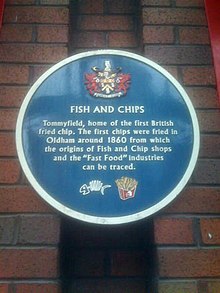
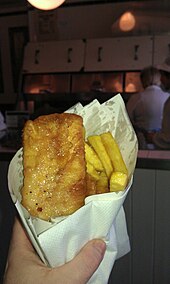
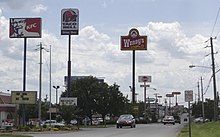
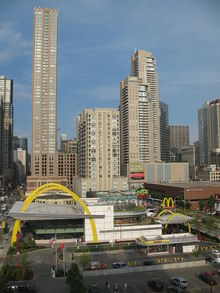
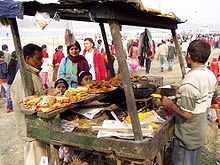



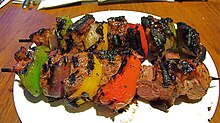
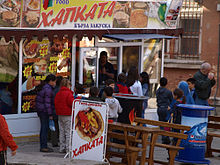


Thanks a lot for give me your best comment.
ReplyDeleteThanks for sharing this blog. I really like it. To get the best and delicious Pizza in Cape May, contact with Pizza Heaven.
ReplyDeleteI really loved this blog. And thanks for sharing this amazing blog post and the history of fast food restaurant. Keep sharing!
ReplyDelete